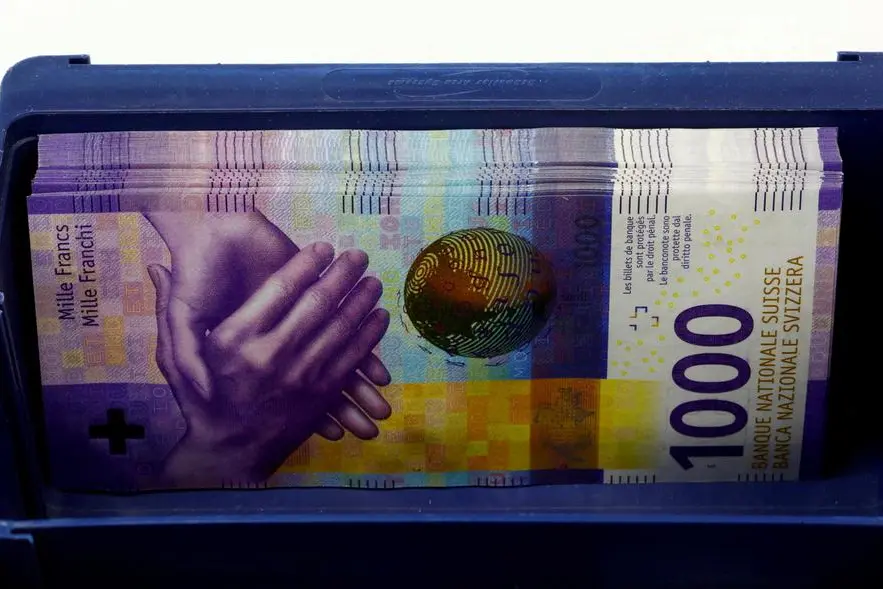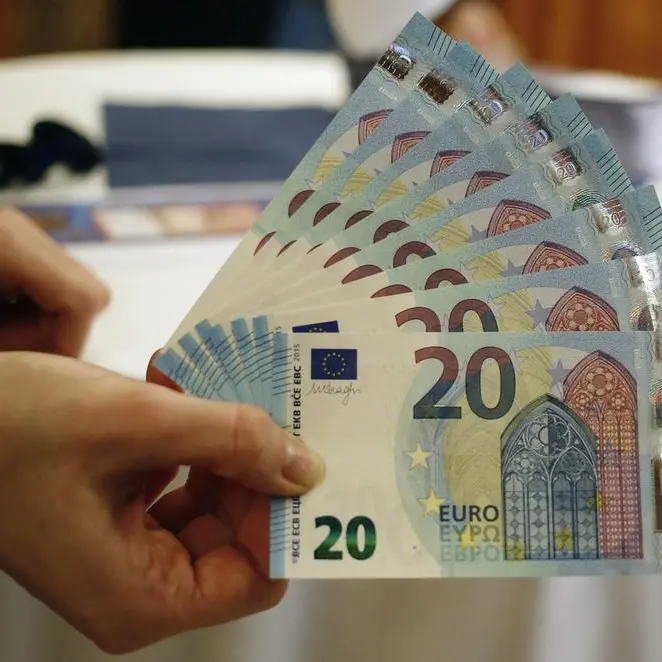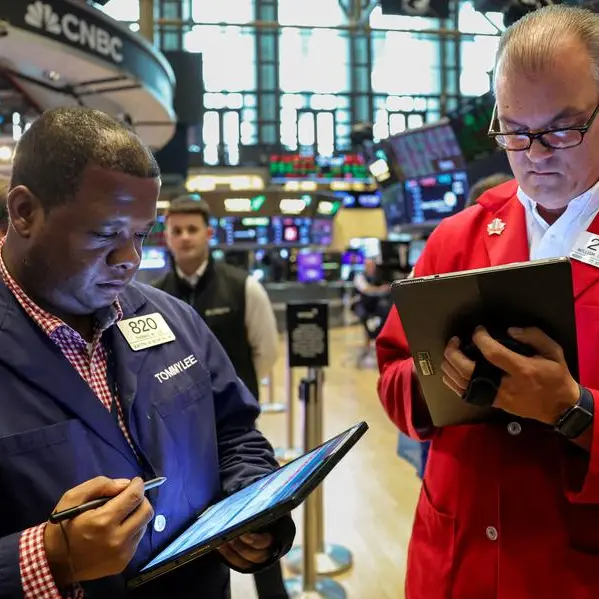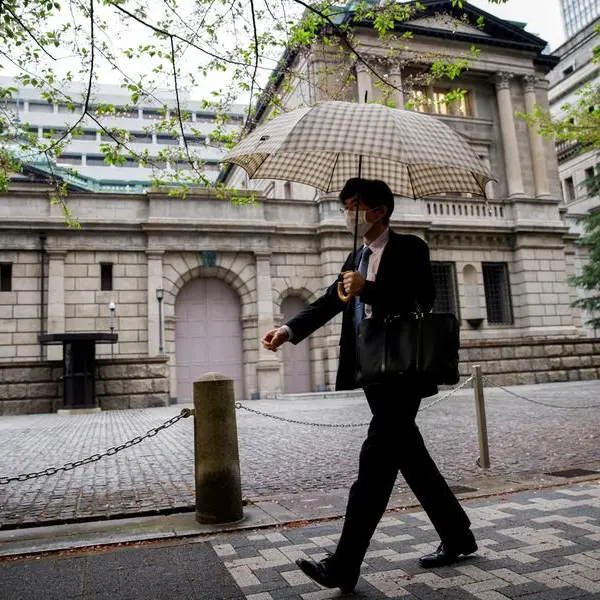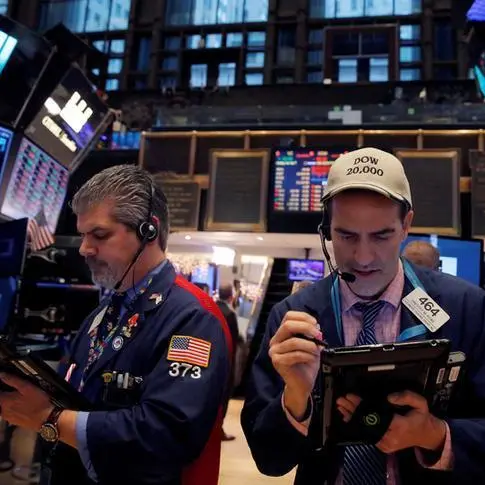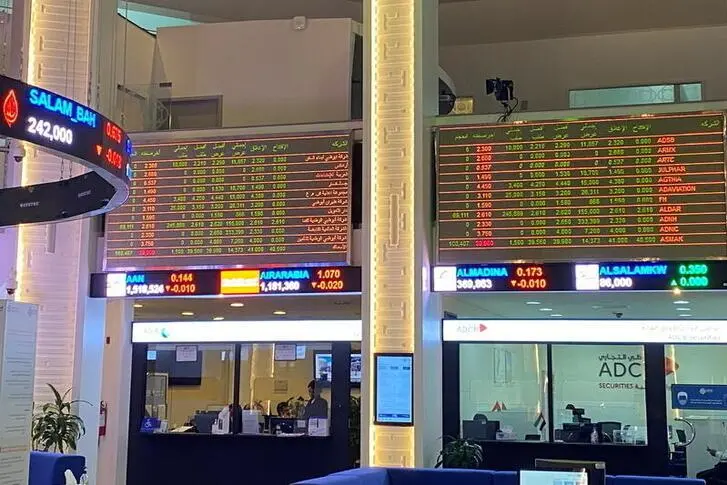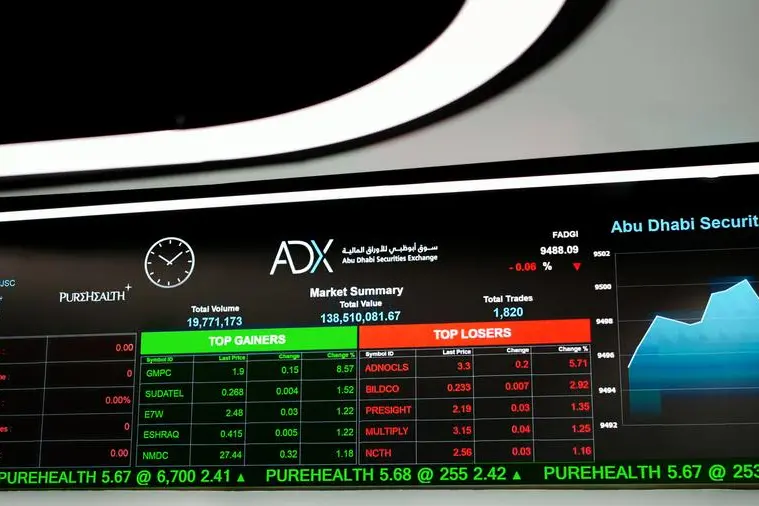PHOTO
FILE PHOTO: One thousand Swiss franc banknotes lie in a box at a Swiss bank in Zurich, April 9, 2019. REUTERS/Arnd Wiegmann/File Photo
LONDON - The supercharged Swiss franc is sucking Switzerland back into a deflationary vortex that its central bank will once again struggle to escape, possibly recycling a fresh wave of financial flows back out across the world.
The Swiss franc, long perceived as a haven in stressful times, has seen its broad nominal exchange rate index surge 5% since U.S. President Donald Trump's return to the White House. But this is just the latest leg of a relentless appreciation of 20% in five years and 33% over the past decade.
In a small open economy, that latest move has been enough to force deflationary relapse and the first drop in annual aggregate Swiss consumer prices in four years last month.
In turn, the Swiss National Bank will almost certainly cut its already meagre 0.25% interest rate back to zero this month. A return to the negative interest rate era of the eight years through 2022 now seems almost inevitable further out.
Markets already see a one-in-three chance of that happening as soon as the SNB's meeting on June 19.
As the last experiment showed, there's a limit to how negative rates can go - mainly because it would be cheaper for big savers to vault their own money than have banks dock more than about 0.75% of deposits annually.
And so the SNB may quickly have to resume selling francs and expanding its balance sheet once again to ward off deflation.
It's been here before. The SNB's balance sheet ballooned almost 10-fold over the decade to 2022, hitting more than 1 trillion francs ($1.3 trillion) at its peak. While it has shrunk since to 843 billion francs, it remains bigger than annual Swiss GDP and more than four times that of the Federal Reserve's balance sheet as a share of the U.S. economy.
Even though the SNB has appeared somewhat reluctant to resume outright franc sales recently, its top brass has pointedly refused to rule out either negative rates or another protracted bout of franc intervention.
A sustained reversal of the franc's fortunes may allow the country to dodge the problem of course - with much of this year's franc surge coming against the ebbing dollar, unlike the euro/Swiss rate focus of a decade ago during the euro crisis.
But if "safety" flows are at least part of what's driving the Swiss currency higher this year, then it's hard to see trade or geopolitical peace breaking out anytime soon.
DEJA VU AND ZEITGEIST
While this may all feel like deja vu in Switzerland, a slow-motion repeat of the "frankenshock" episode, it speaks to some of the biggest trends impacting markets today and has numerous implications globally.
Rebuilding SNB reserves from today's already lofty levels could put upward pressure on a range of euro debt and dollar equity assets. The SNB remains a top 50 shareholder in all seven of the top U.S. big tech megacap stocks, for example, as well as euro zone government debt.
The SNB diversified away from the euro in favour of dollars during the euro debt crisis over a decade ago and now holds an equal share of both euro and dollar holdings, as Barclays analysts point out.
"A reversal of that trend would not be unprecedented," they said, referring to "jitters" around the prospect of the SNB diversifying away from the dollar in light of recent trade developments.
While the SNB's trade-weighted franc index is dominated by a 42% euro weighting, the dollar still commands a 14% share and the dollar, yuan, yen and sterling combined account for about a third of the total. And so a sharp weakening of the dollar, dollar-priced commodities and other dollar-linked currencies still packs a punch for Switzerland regardless of relative stability on the euro.
MANIPULATOR
The other complication of a renewed intervention bout is that Switzerland finds itself firmly on the radar of the Trump Treasury's "currency manipulator" report, expected by analysts to be published this month.
ING's Francesco Pesole reckons one reason the SNB has been holding off from intervention so far this year is precisely because it wants to avoid being labelled a manipulator by Washington and thus face a more extreme tariff onslaught.
Pesole says that with Switzerland already in the "currency manipulator" report's sights due to the country's trade surplus with the U.S., its current account surplus more broadly and its long history of currency capping, the SNB may push negative rates as far as they can go before wading back into foreign exchange markets.
"Should the (U.S.) Treasury's FX report be published before then, markets may increase their bets on a 50bp rate cut in June on the view that being added to the monitoring list further reduces the scope for FX interventions," he wrote.
Unlike previous franc surges, when FX purchases were the obvious solution, the SNB may now find itself "damned if it does, and damned if it doesn't."
The opinions expressed here are those of the author, a columnist for Reuters
(By Mike Dolan; Editing by Jamie Freed)
